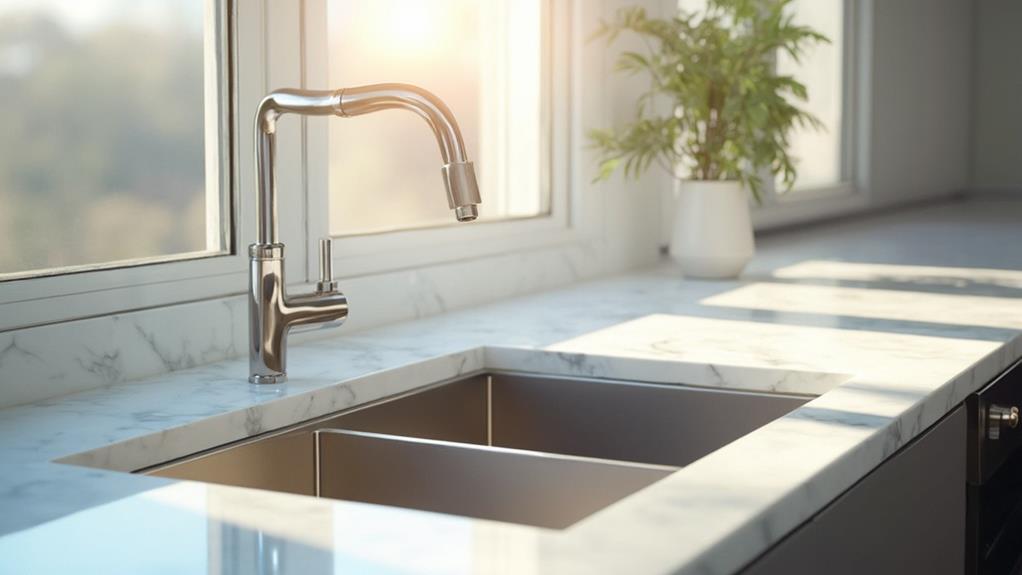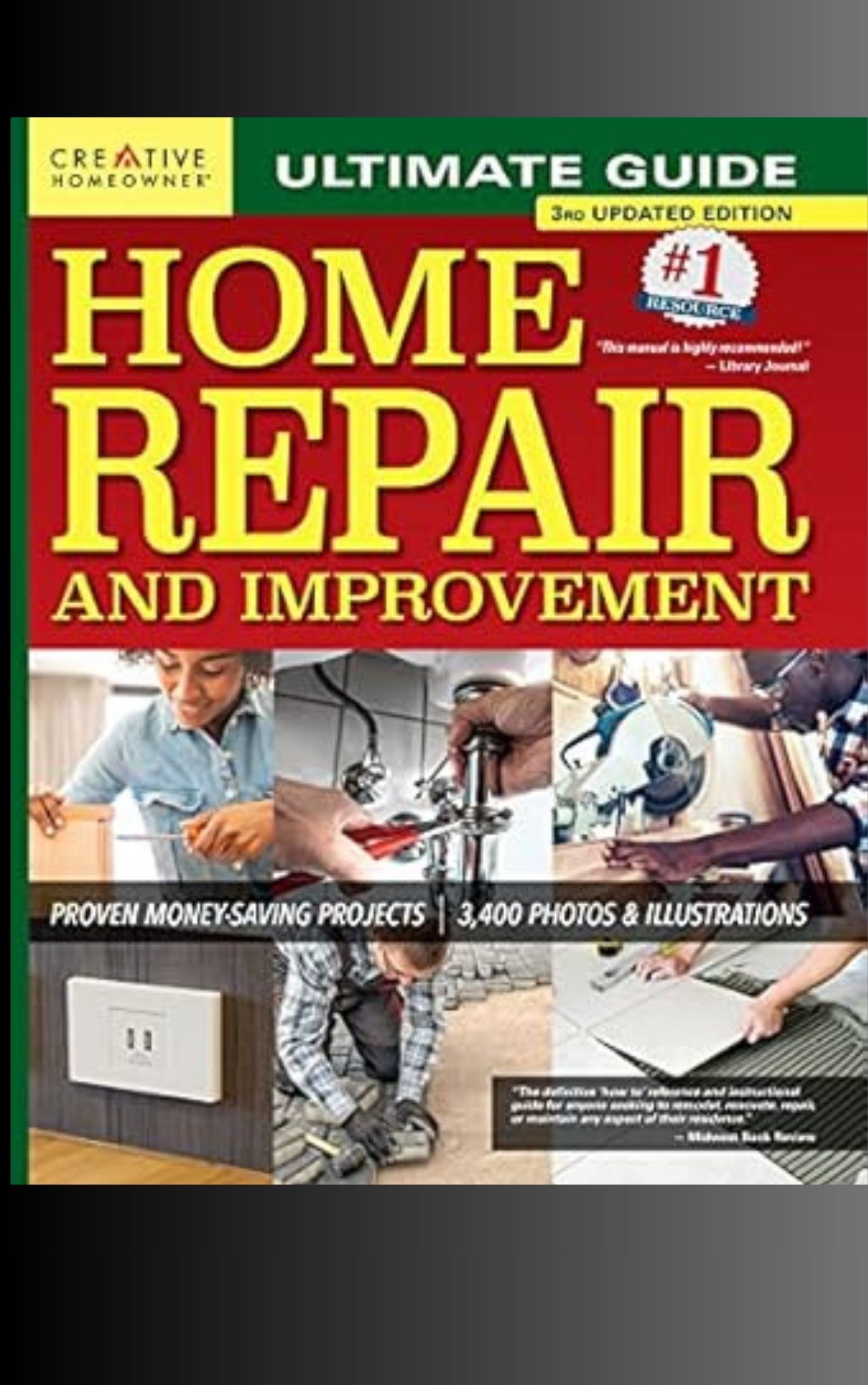To choose the perfect kitchen sink and faucet, start by assessing your kitchen's layout and measuring available space. Consider sink materials like stainless steel or granite composite, and decide between single or double-bowl styles. For faucets, focus on functionality with features like pull-down sprayers or touch-activated controls. Match the finish to your kitchen's aesthetics, choosing from options like chrome, brushed nickel, or matte black. Don't forget to balance cost with quality, factoring in long-term value and energy efficiency. By carefully weighing these aspects, you'll be well-equipped to make a decision that enhances both your kitchen's look and functionality. Let's explore each factor in more detail.
Assess Your Kitchen's Layout
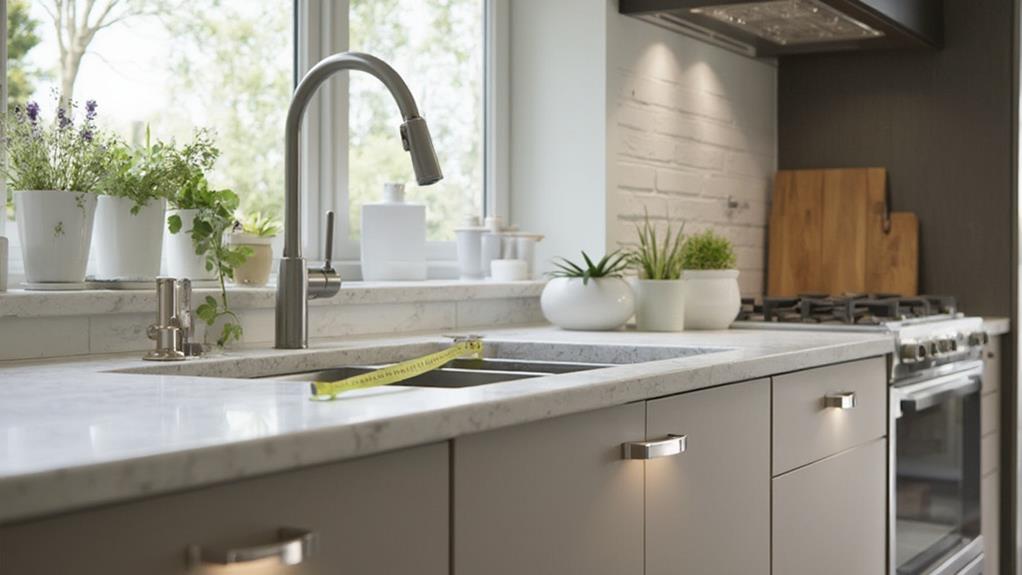
Before diving into sink and faucet selection, take a close look at your kitchen's layout. Consider the size and shape of your countertop, the location of existing plumbing, and the overall flow of your kitchen. Measure the available space for your sink, including depth, width, and length. Don't forget to account for cabinet space underneath.
Note the position of nearby appliances, such as the dishwasher and refrigerator. You'll want to ensure easy access to the sink for loading dishes and filling water containers. Consider how you use your kitchen – do you need a large sink for meal prep, or would a smaller one suffice?
Examine your current sink's placement. Is it in an ideal spot, or could you improve functionality by moving it? If you're planning a kitchen renovation, this is the perfect time to optimize your sink's location.
Assess your plumbing setup. Moving pipes can be costly, so it's often easier to work with existing connections. However, if a new layout would significantly improve your kitchen's efficiency, it might be worth the investment.
Determine Sink Material and Style
Once you've assessed your kitchen's layout, it's time to explore sink materials and styles. Common sink materials include stainless steel, granite composite, fireclay, cast iron, and porcelain. Stainless steel is durable and easy to clean, while granite composite offers superior scratch and stain resistance. Fireclay sinks are heat-resistant and have a classic look, while cast iron sinks are incredibly sturdy but heavy. Porcelain sinks are affordable and come in various colors but can chip easily.
As for styles, single-bowl sinks are great for washing large items, while double-bowl sinks allow for multitasking. Farmhouse (apron-front) sinks make a bold statement and are ideal for traditional kitchens. Undermount sinks create a seamless look and are easy to clean around, while top-mount (drop-in) sinks are simpler to install. Consider your cooking habits, cleaning preferences, and kitchen aesthetics when choosing a style.
Don't forget to factor in sink depth and width. Deeper sinks reduce splashing but may be uncomfortable for taller users. Wider sinks accommodate large pots and pans but take up more counter space. Balance your needs with available space to find the perfect sink for your kitchen.
Consider Faucet Functionality
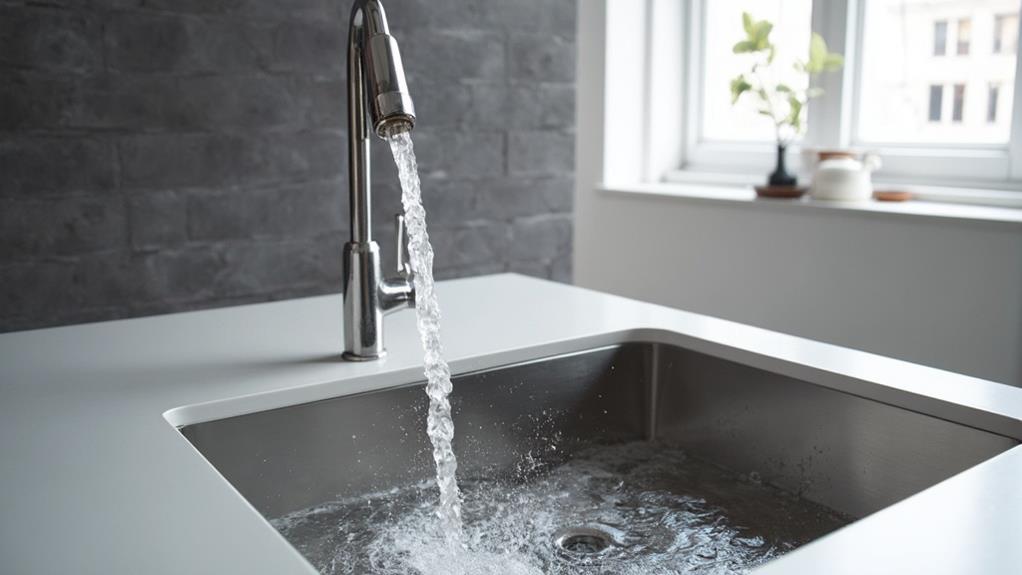
With your sink selection made, it's time to focus on choosing the right faucet. Consider the functionality you need in your kitchen. Do you frequently fill large pots? A high-arc faucet with a pull-down sprayer might be ideal. For easier cleaning and hands-free operation, look into touch-activated or motion-sensor faucets.
Think about water efficiency. Low-flow faucets can help conserve water without sacrificing performance. If you're concerned about water quality, built-in filtration systems are available in some models.
Don't overlook the number of holes in your sink. This will determine whether you need a single-hole, three-hole, or bridge faucet. If you're replacing an existing faucet, match the hole configuration or consider a deck plate to cover unused holes.
For added convenience, consider a pot filler faucet near your stove or a separate beverage faucet for filtered water. Side sprayers can be useful for rinsing dishes or cleaning the sink.
Lastly, think about ease of use. Lever handles are typically easier to operate than knobs, especially with wet or soapy hands. Single-handle faucets offer quick temperature adjustments, while two-handle models provide more precise control.
Match Finishes to Kitchen Aesthetic
The aesthetic appeal of your kitchen faucet shouldn't be overlooked. When choosing a finish, consider your kitchen's overall style and color scheme. Popular options include chrome, stainless steel, brushed nickel, oil-rubbed bronze, and matte black.
Chrome and stainless steel offer a sleek, modern look that's easy to clean and matches well with contemporary kitchens. They're also durable and resistant to tarnishing. Brushed nickel provides a softer, warmer appearance that complements both traditional and transitional styles. It's less prone to showing water spots and fingerprints than shinier finishes.
For a rustic or farmhouse-style kitchen, consider oil-rubbed bronze. This dark finish adds depth and character, aging beautifully over time. Matte black is a bold choice that works well in both modern and industrial-inspired spaces, creating a striking contrast against light-colored countertops or backsplashes.
Don't forget to coordinate your faucet finish with other kitchen hardware, such as cabinet pulls and appliances. While exact matches aren't necessary, aim for a cohesive look. If you're unsure, opt for a versatile finish like brushed nickel that blends well with various styles and materials.
Budget and Long-Term Value
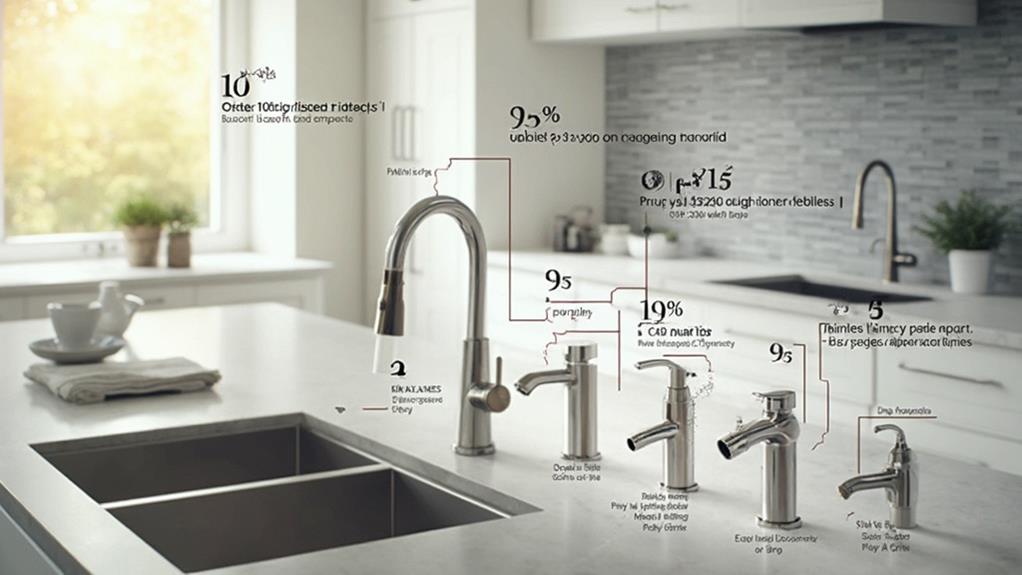
Budget considerations play a crucial role in choosing a kitchen sink and faucet, but it's essential to balance cost with long-term value. While it's tempting to opt for the cheapest options, investing in quality materials and craftsmanship can save you money in the long run.
Durable materials like stainless steel, granite composite, or fireclay for sinks, and solid brass for faucets, may cost more upfront but will resist wear and tear, lasting for years.
Consider the warranty offered by manufacturers, as this can indicate the product's expected lifespan and potential for repairs or replacements. Energy-efficient faucets with water-saving features can help reduce your utility bills over time. Don't forget to factor in installation costs, which can vary depending on the complexity of the job and whether you're replacing existing fixtures or starting from scratch.
When comparing prices, look beyond the initial cost and evaluate the total cost of ownership. This includes maintenance, potential repairs, and energy efficiency. By investing in high-quality, durable products, you'll enjoy a functional and attractive kitchen while potentially saving money on replacements and repairs in the future.
Conclusion
You've meticulously planned every detail of your kitchen sink and faucet, considering layout, materials, functionality, and aesthetics. Ironically, after all this effort, you'll probably spend more time cursing at stubborn food stains and battling water spots than admiring your perfect choices. But don't despair! When guests compliment your impeccable taste, you'll beam with pride, conveniently forgetting the daily struggles. Your kitchen's unsung heroes await their moment to shine – or at least to rinse and repeat.
